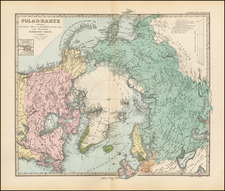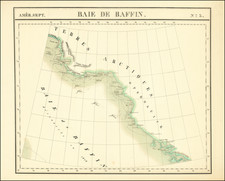This 1905 chart of the South Pole by cartographer J.G. Bartholomew offers a comprehensive depiction of Antarctica and its exploration history up to the early 20th century, integrating data from multiple expeditions and showcasing both known and unexplored territories.
At the turn of the 20th century, Antarctica remained largely a mystery, with vast areas uncharted and unexplored. This chart, compiled from the latest sources available in 1905, represents a significant effort to consolidate existing knowledge about the South Pole. Its delineation of unexplored regions in white, open sea in dark blue, and known land alongside explorers' routes, provides a visual narrative of the human endeavor to understand this remotest part of the world. It documents key explorations, including those of Weddell in 1833, and presents ocean soundings, revealing both the depth of human knowledge and the vastness of the unknown.
The chart includes an inset of the British Isles, shown to scale, highlighting the geographical and conceptual distance between the familiar and the frontier of exploration. Additionally, the left edge of the sheet features a series of maps of Antarctica from 1760 to 1905, portraying the evolving understanding of the region. These maps color-code land, sea, and unexplored areas, with the black representing unexplored territory progressively shrinking over time, visually encapsulating the progress of exploration.
The historical significance of the Chart of the South Polar Regions lies in its encapsulation of a romantic era of exploration. It chronicles the progression from Cook's voyages in the 1770s to the expeditions of Gerlache, Scott, Bruce, Drygalski, and Nordenskiold in the early 20th century. The chart is a fantastic and attractive summary of the state of knowledge before the final push for the South Pole in the following years.









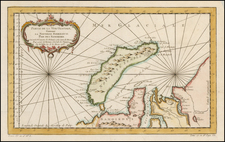
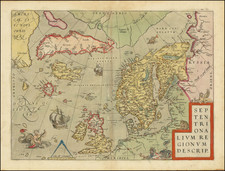
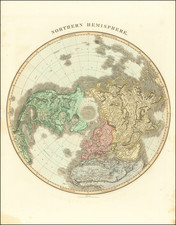
![[Grotto of Tethys -- Versailles] Le Soleil qui se couche dans la mer / Le Globe de la Terre, divise en six parties.](https://storage.googleapis.com/raremaps/img/small/79606.jpg)
